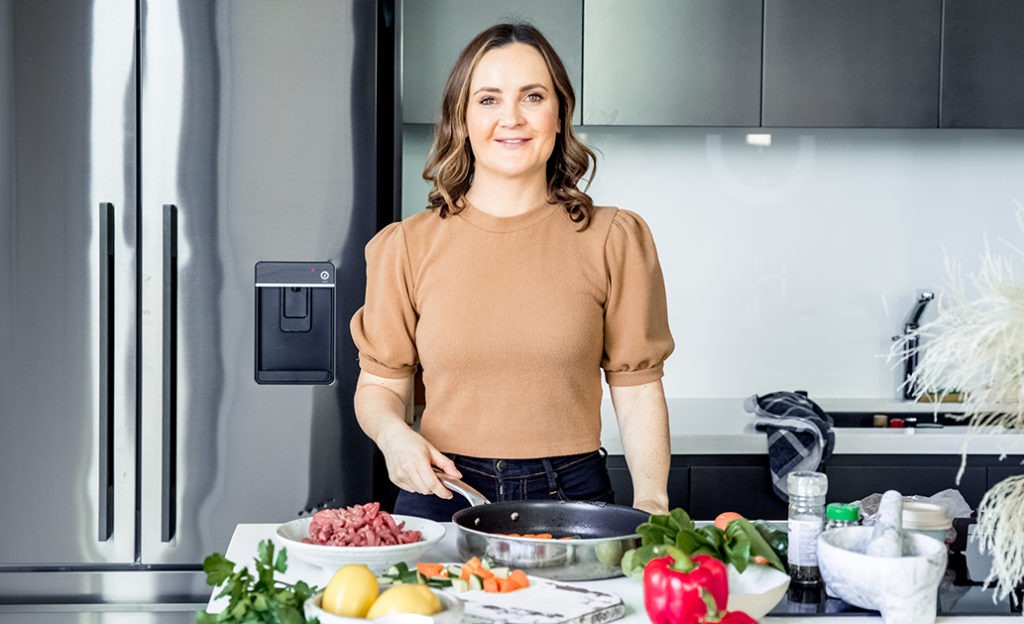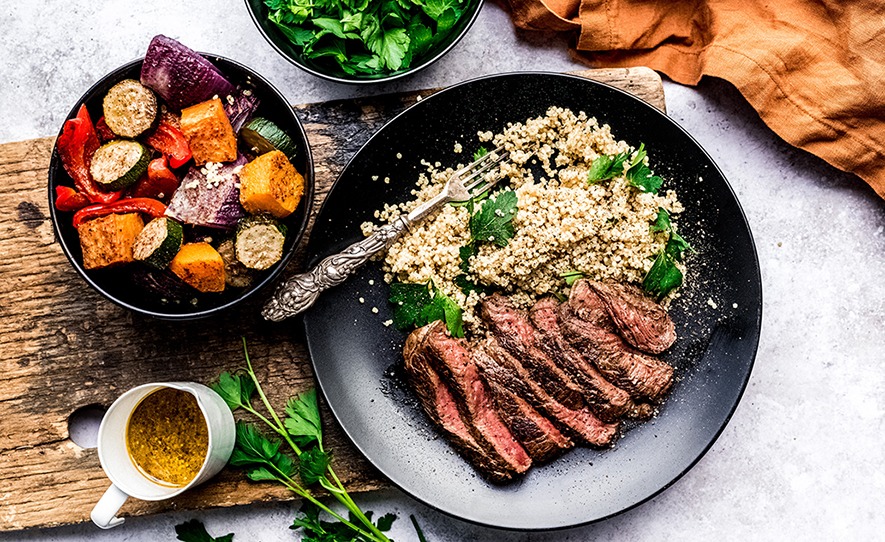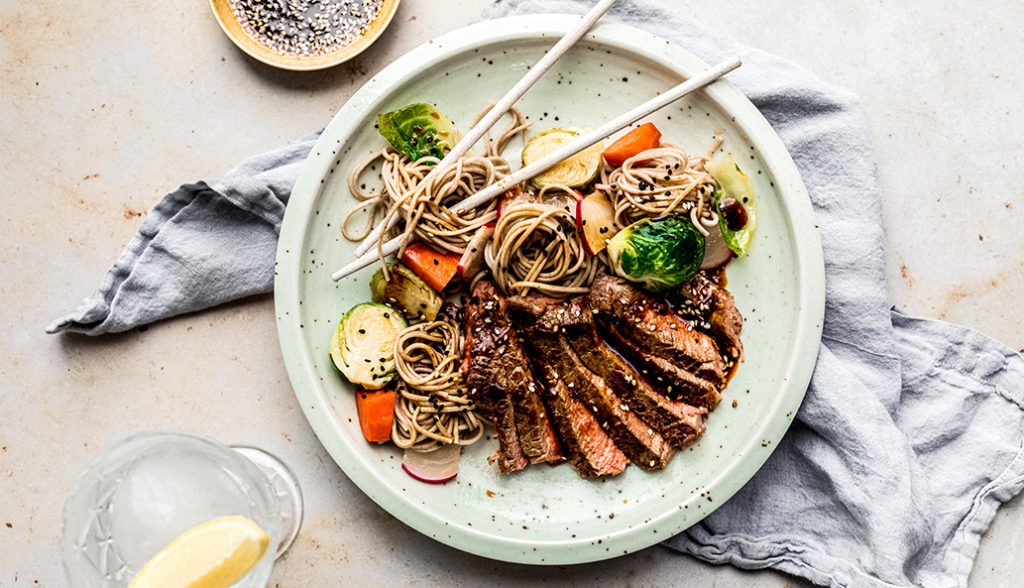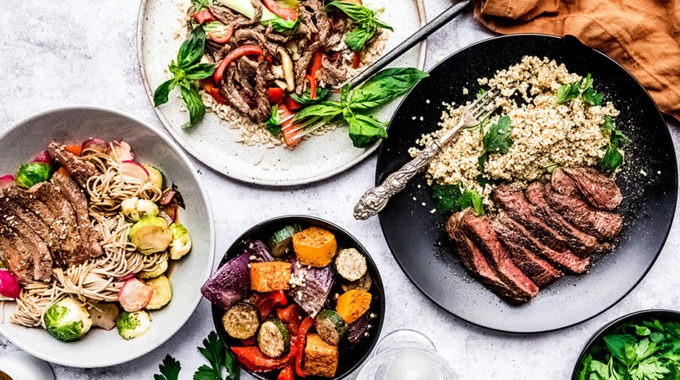Winter beef recipes fit for an Olympian
With the Tokyo Olympics about to kick off (if they don’t get cancelled), Australian Beef has partnered with sports dietitian Jessica Spendlove to showcase protein-packed beef recipes that are athlete-approved but also easy enough for armchair amateurs to enjoy.
With more than 25 seasons of experience in professional sports, Spendlove has worked with some of Australia’s top athletes, and is all about helping motivated people live, feel and perform at their best. While a nutritious diet is essential whether you’re a gold medal-winning athlete or not, Spendlove says there’s a lot of conflicting information out there about what we should and shouldn’t be eating. But ultimately, it’s all about balance.
“It’s important to remember that balance is everything for healthy meals,” she says. “Every day we should be eating a mixture of protein, fibre, fat and carbs. It’s also crucial that meals are tasty and easy to make, which is why Australian beef is the perfect base to any meal – it’s delicious, versatile and packed with essential nutrients that are vital for your health, from supporting your immune system to helping with muscle growth and recovery.”

Aussie beef’s nutrition scorecard
1. Beef is packed with protein which is needed for healthy muscles, immunity and bones.
2. Beef is a great way to get enough iron and zinc in your diet.
3. Beef is packed with 12 essential nutrients: iron, zinc, omega-3, magnesium, selenium, niacin, riboflavin, potassium, phosphorus and vitamins B5, B6 and B12.
4. Beef can be enjoyed in a healthy, balanced meal 3 to 4 times a week.
With Australian Beef being an official team partner of the Australian Olympic team at the Tokyo Games, this year’s Olympics are the ideal time to put the nutritional benefits of Aussie beef on a global stage. While the below beef recipes are fit for Olympians like world champ javelin-thrower Kelsey Lee-Barber, they’re also perfect for those of us who are simply striving for more everyday greatness. You can also try these winter warmer beef recipes.

Roast beef rump with winter vegetables
Recipe by Jessica Spendlove
Serves 4
Prep time 20 minutes
Cook time 40 minutes
You’ll need:
600g beef rump steak (trimmed)
400g butternut pumpkin peeled, cut into 2cm pieces
1 zucchini, sliced
400g sweet potato peeled, cut into 2cm pieces
1 large capsicum, thinly sliced
1 large red onion, cut into wedges
2 tbsp extra virgin olive oil
2 tsp sumac
200g quinoa
1½ tbsp lemon juice
1½ tsp wholegrain mustard
1 tsp maple syrup
1 bunch fresh continental parsley leaves
Method:
1. Preheat oven to 210°C fan forced.
2. Line 2 baking trays with baking paper. Spread vegetables over prepared trays. Drizzle with 1 tablespoon of extra virgin olive oil. Sprinkle with sumac, salt and pepper and toss to combine. Roast for 30 minutes or until golden and tender.
3. Rinse 1 cup of quinoa in water and drain. In a saucepan, combine quinoa with 2 cups of water. Bring to the boil, stir once, then reduce the heat to a simmer. Cover and leave to cook for 15 minutes – don’t remove the lid. Remove from heat and allow to sit, covered for a further 10 minutes. Remove lid, fluff with a fork and drain if necessary, before serving.
4. Combine lemon juice, mustard, maple syrup and half a tablespoon of extra virgin olive oil in a bowl. Season with salt and pepper.
5. Heat a chargrill pan on medium high. Coat beef rump in half a tablespoon of extra virgin olive oil, season with salt and pepper. Cook, turning, for 3 minutes for medium or until cooked to your liking. Transfer to a plate. Rest for 3 minutes. Thinly slice against the grain.
6. Combine the roast vegetables, quinoa, parsley, steak and half the dressing in a bowl. Toss and divide among plates. Drizzle with remaining dressing.
Tips:
1. This recipe is versatile; the quinoa can be substituted for a number of grains including buckwheat, couscous and brown rice.
2. If you have an issue with eating onion but still want the flavour, omit the onion and use onion-infused extra virgin olive oil.

Scotch fillet with soba noodles & honey-glazed vegies
Recipe by Jessica Spendlove
Serves 4
Prep time 10 minutes
Cook time 15 minutes
You’ll need:
800g scotch fillet (trimmed)
200g soba noodles
1 tbsp mirin
1 tbsp rice wine vinegar
2 tbsp extra virgin olive oil
1 tbsp honey
1 tsp finely grated fresh ginger
400g small Brussels sprouts, halved
1 bunch small radishes, quartered
1 carrot, diced
2 tsp mixed sesame seeds
For the dressing:
1 tbsp tamari or soy sauce
1 tsp sesame oil
2 tsp honey
2 tsp mirin
1 tsp finely grated fresh ginger
1 tsp sesame seeds
Method:
1. Cook noodles in a large saucepan of boiling water, following packet directions, until tender. Drain and rinse under cold running water.
2. To make the dressing, combine tamari, mirin, sesame oil, honey, ginger and sesame seeds. Set aside for later.
3. In a separate bowl, combine the extra mirin, vinegar, honey and ginger.
4. Heat 1 tablespoon of extra virgin olive oil in a non-stick frying pan over medium-high heat. Trim visible fat from steak, season with salt and pepper. Cook steak (turning at halfway point) for 5 minutes. Transfer to a plate, cover and set aside for 5-10 minutes.
5. Heat 1 tablespoon of extra virgin olive oil in pan over medium-high heat. Add the radish, carrot and halved sprouts. Season with salt and pepper. Cook for 5-6 minutes or until golden brown, stirring regularly. Add mirin mixture (mirin, vinegar, honey and ginger). Cook for 2 minutes or until glazed and sticky, stirring regularly. Add 1 teaspoon of sesame seeds.
6. Thinly slice the beef. Divide noodles in bowls and top with honey-glazed vegetables and beef. Finish with the dressing and sprinkle the remaining sesame seeds.
Tips:
1. Make sure the pan is nice and hot before placing scotch fillet on to cook.
2. You can rub extra virgin olive oil on the beef before seasoning with salt and pepper.
3. Allow the beef to rest – a good tip is 1 minute for every 100 grams (resting means placing on a warm plate and loosely covering it with foil, making sure it’s not too tight).
4. If you can’t find mirin, you can omit it from the recipe – it’s still delicious without it.









